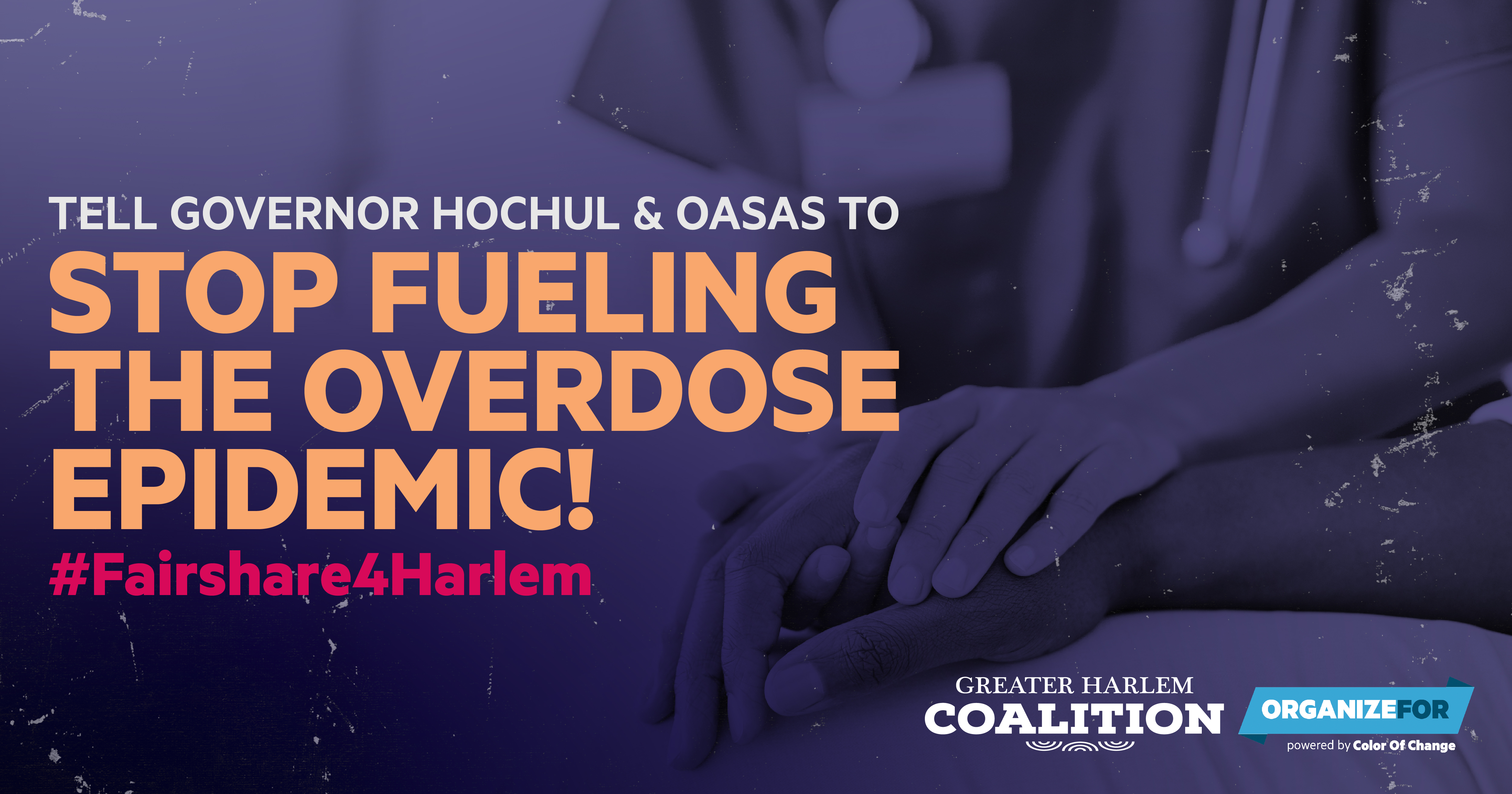Syderia Asberry and Shawn Hill just started a petition to New York State Governor Kathy Hochul; New York State OASAS Commissioner Chinazo Cunningham : Stop Fueling the Overdose Epidemic ! Locate Small-Scale, Effective, and Holistic Drug Programs in All Communities
| |||
Dear friend,
I just started a petition titled "Tell Governor Kathy Hochul and OASAS Commissioner Chinazo Cunningham: Stop Fueling the Overdose Epidemic!"
Why are 19% percent of New York’s opioid treatment programs in Harlem when only 4.3% of treatment patients live in the area ?1 Most of New York’s opioid treatment programs have been packed in historically redlined communities. For instance, the New York State Office of Addiction Services and Supports (OASAS) perpetuates redlining by repeatedly licensing methadone clinics that ultimately concentrate within Harlem.2 Currently, 75 percent of the opioid treatment patients that are sent to programs located in Harlem and East Harlem do not live in these communities—traveling from as far away as Staten Island.3 Drug use is not limited to communities of color and so the treatment facilities shouldn’t be either. Concentrating the majority of New York City’s methadone mega-centers in a handful of low-resourced neighborhoods limits convenient patient access and fuels the overdose epidemic. New Yorkers shouldn’t have to travel for hours to access vital, daily care.
The current presence of treatment mega-centers in communities of color reinforces the message that addiction is a Black issue and one that should be contained in Black neighborhoods. When the crack epidemic ravaged Black communities in the 1980s and 1990s, Black people were criminalized, Black families were ripped apart, and Black children were forced into foster care.5 Government leaders harmed Black communities instead of helping them. This is in stark contrast to how the current opioid crisis is being handled with swift action to save lives. There is undeniably more support now—from prioritizing treatment centers to actually acknowledging this drug epidemic as a public health emergency. But, again, Black communities are being stigmatized and asked to shoulder the weight of recovery for the rest of the city. This can be retraumatizing to those who were directly affected by the crack epidemic and witnessed how concentration can lead to communities falling apart.
We envision a vibrant, tolerant, clean, and safe community where everyone who lives, works, goes to school, and seeks treatment in Harlem can thrive. Our goal is to balance compassion with the demand that all communities take their fair share. We want to support our neighbors who continue to struggle with systemic and generational health, economic, social, and safety disparities. And we want to end the decades-long practice of packing drug treatment mega-centers into Black communities. We want small-scale, community-based, holistic, effective treatment centers in all New York neighborhoods.
Thank you,
Syderia Asberry and Shawn Hill.
References :
|

Color Of Change is building a movement to elevate the voices of Black folks and our allies, and win real social and political change. Help keep our movement strong.

Aucun commentaire:
Enregistrer un commentaire